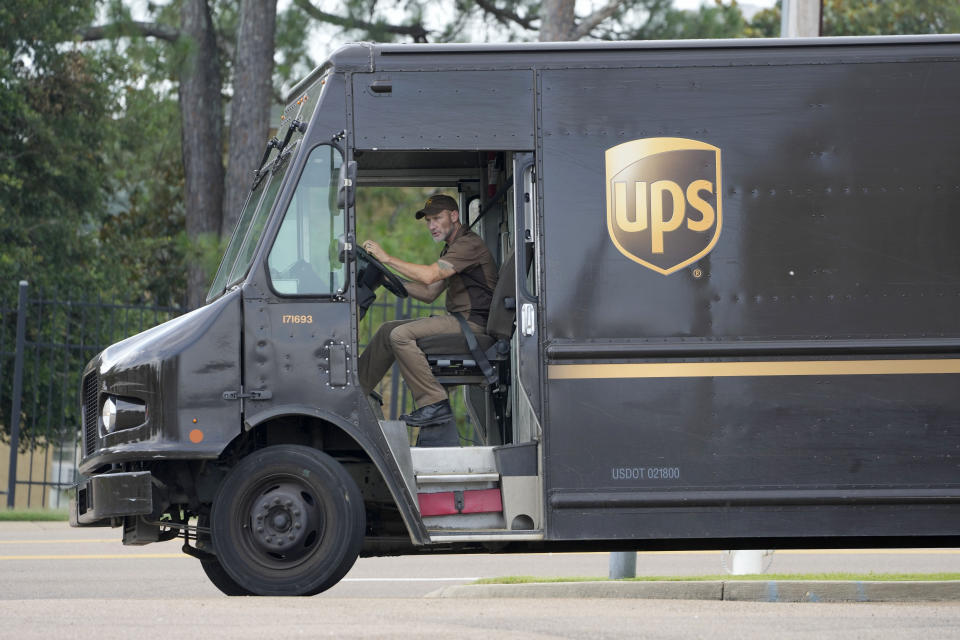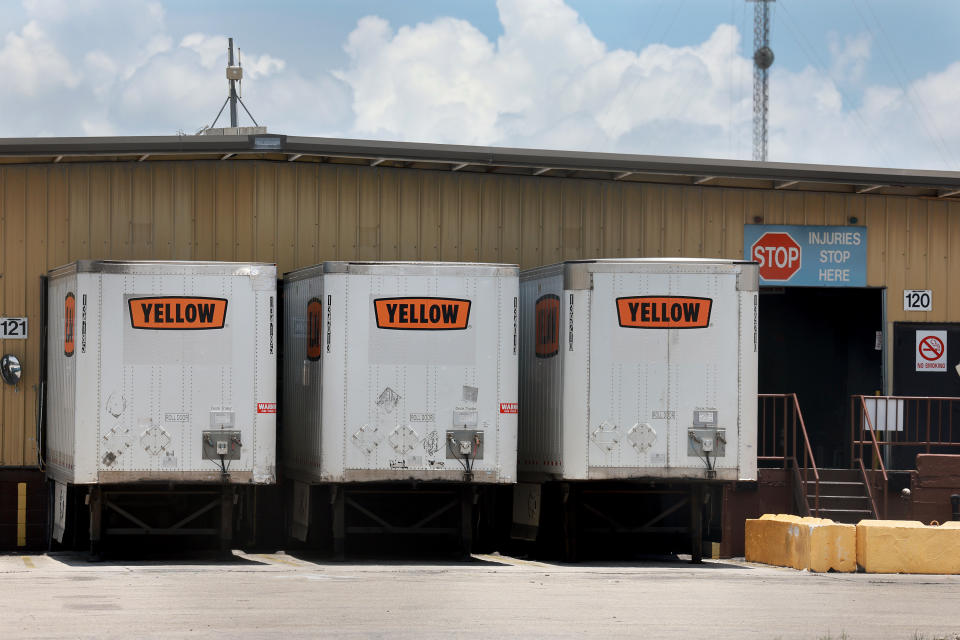
United Parcel Service (UPS) heads back to the negotiating table Tuesday to resolve a high-stakes dispute with the union that represents its 340,000 delivery and warehouse workers.
There is not much time for the package giant to reach a deal. The company’s labor contract with the International Brotherhood of Teamsters expires Aug. 1, and the Teamsters union has already threatened a strike if there is no pact by that day.
If 340,000 workers walk off the job, it would be the largest strike against a single business in US history.
Here is a look at the potential costs, how the two sides got to this point, and their remaining points of disagreement:
A $7 billion hit
A walkout of 340,000 workers could upend the US supply chain, add to inflationary pressures, and possibly push loyal UPS customers to competitors such as FedEx (FDX), Amazon (AMZN), and the United States Postal Service.
UPS currently handles 22 million domestic packages a day. It was responsible for delivering 24.5% of all US parcels in 2022, according to Pitney Bowes. Only the Postal Service handled more.
The company said its daily deliveries account for roughly 5-6% of US gross domestic product (GDP). Teamsters Union president Sean O’Brien said at a rally Saturday that the deliveries represented 7% of GDP.
“If the strike does happen, it’s a big one, a really big one,” Stanford University political science professor Margaret Levi told Yahoo Finance last week.

“This affects our logistics chain, our supply chain, how we get our packages,” she added. “We’re all incredibly dependent on that these days.”
The last UPS strike was in 1997, when roughly 185,000 workers walked out. At the time UPS handled fewer packages per day but was responsible for more total industry traffic.
That work stoppage lasted for 15 days and cost UPS hundreds of millions of dollars. The company eventually made concessions on pay, pensions, and part-time workers.
This time around, a 10-day strike could result in economic losses of $7 billion, according to estimates from the Anderson Economic Group. In addition to earnings losses for UPS, that includes lost wages of $1.1 billion for workers and $4 billion in losses for UPS customers.
Only “a fraction” of deliveries impacted by such a strike would be filled by FedEx, the Postal Service, or other carriers, according to Anderson.
A US Postal Service spokesperson said “the Postal Service has a strong network, and we have the capacity to deliver what is tendered to us.”
Points of disagreement
When the two sides were last at the negotiating table during the first week of July, they were unable to reach an agreement on pay rates for UPS’s part–time union workers.
Those workers make up more than half of the company’s workforce and earn an average of $20 per hour after 30 days on the job.
This group already gets the same healthcare and pension benefits as full-time workers.

UPS said there’s still time to resolve the “few” remaining open issues between the parties but didn’t say what pay rate the Teamsters wanted for regular full-time workers.
“We’ve reached agreements that address nearly all of the Teamsters’ stated priorities,” a company spokesperson said in an email to Yahoo Finance.
Teamsters did not provide an update on Monday to Yahoo Finance on its request for comment. During a speech on Saturday, O’Brien said “we’ve organized, strategized, now it’s time to pulverize.”
A UPS spokesperson said, “We are prepared to increase our industry-leading pay and benefits, but need to work quickly to finalize a fair deal that provides certainty for our customers, our employees and businesses across the country.”
Points of agreement
There are several issues already ironed out between the two sides.
They include:
— Ending forced overtime on unscheduled days.
— Air conditioning for new delivery cabs.
— Disabling inward-facing delivery vehicle cameras.
— More full-time positions.
— More hours for seasonal part-time workers.
The union and UPS also agreed to eliminate a pay class for a hybrid group of full-time workers who sort and load packages in the company’s warehouses, as well as drive and deliver packages.
This group was formed in a mutual agreement between UPS and the union to meet demands for Saturday delivery.

Those workers who work Tuesday through Saturday and earn $36.54 per hour plus benefits will convert to regular full-time workers, though their pay rate has not yet been disclosed by the parties.
The Teamsters union also demonstrated this past weekend that it was willing to stand down on its threat to strike at another company, trucker Yellow.
The union withdrew plans for a walkout that could have begun Monday after a pension fund agreed to extend benefits to unionized workers.
The hourly pay of $20 per hour for part-time workers after 30 days that was mentioned in a prior version of this story was amended to reflect that the figure represents average part-time pay.
Alexis Keenan is a legal reporter for Yahoo Finance. Follow Alexis on Twitter @alexiskweed.
Click here for the latest stock market news and in-depth analysis, including events that move stocks
Read the latest financial and business news from Yahoo Finance






